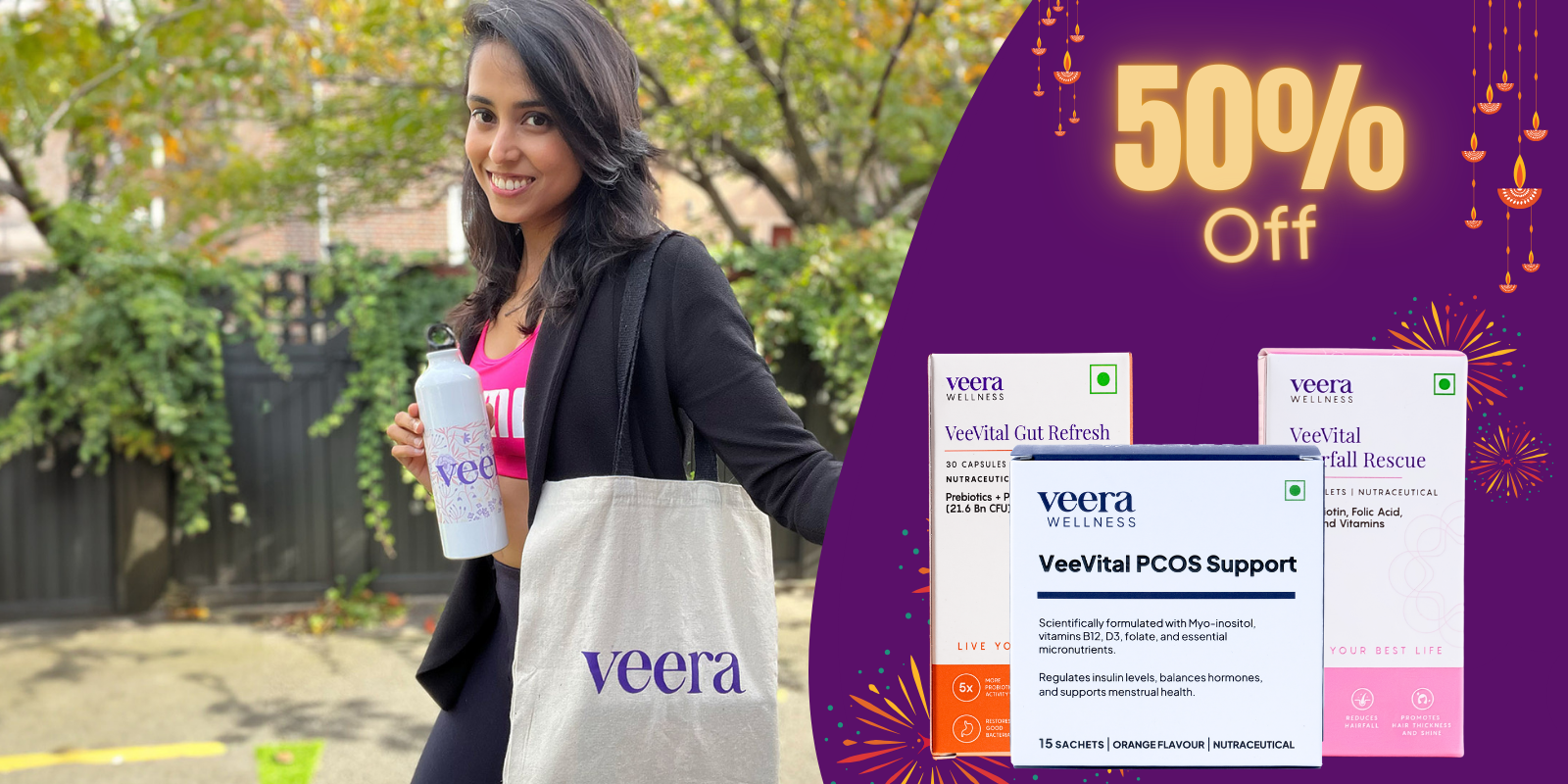Menstrual discomfort is not a sickness; it is a symptom. Getting the correct diagnosis is essential for managing dysmenorrhea effectively. Some PCOS sufferers have crampy, painful periods during their cycles.
You should see your primary care doctor for an evaluation if you have persistent period pain that keeps you from going about your everyday activities, especially if it is accompanied by other symptoms like heavy bleeding, anxiety or sadness, and irregular menstruation.
Menstrual Pain Types:
The medical name for period discomfort, often known as menstrual cramps, is dysmenorrhea. Dysmenorrhea includes two types: primary and secondary.
Primary dysmenorrhea is the term used to describe recurrent menstrual cramps that are not brought on by another illness.
Secondary dysmenorrhea is the medical term for painful periods brought on by a condition or infection in the female reproductive system.
Primary Dysmenorrhea –
Functional dysmenorrhea is another name for this period of pain, which is usually not harmful. It happens in the absence of any underlying gynecologic illness.
It is a defining feature of abdominal cramps, typically in the lower abdomen, that appears just before or during menstruation and goes away a day or two later.
Typical signs of primary dysmenorrhea include:
- Thigh and back discomfort
- Headache
- Nausea
- Diarrhoea
- Vomiting
According to recent research, cramping is typically brought on by an imbalance in uterine prostaglandin levels. The majority of bodily tissues contain hormone-like substances called prostaglandins. Various prostaglandin kinds regulate numerous biological processes.
Secondary Dysmenorrhea –
If your period discomfort is linked to a known illness, you get diagnosed with secondary dysmenorrhea. Physical examination results may show pelvic abnormalities. A doctor could recommend a pelvic ultrasound if secondary menstrual pain is thought to be present.
Additional signs of secondary dysmenorrhea include:
- Pain during sexual activity (Dyspareunia)
- Abnormally persistent or severe bleeding (Menorrhagia)
- Irregular cycles
- Infertility
Secondary dysmenorrhea is frequently brought on by:
- Endometriosis
- Fibroids (myomas)
- Adenomyosis
- Endometrial polyps
- Pelvic inflammatory disease (PID)
- PCOS
- Ovarian tumours
- Use of an intrauterine contraceptive device (IUD)
- Sexually transmitted infection (STI)
What are the reasons for more pain during menstruation in women with PCOS?
The uterus contracts to help expel the uterine lining, which causes the dull, throbbing aches you experience in the lower abdomen and nearby locations.
- Prostaglandins, which are the result of this natural and normal process, are responsible. These fatty acid-based substances in the body control the female reproductive system.
- Periods are uncomfortable, but when prostaglandin levels are high, periods can be pretty painful.
- Dysmenorrhea, either primary or secondary, is the medical term for this.
- The latter is distinguished from the former by being connected to a specific disorder in the reproductive organs, such as PCOS or endometriosis.
- The former refers to regular cramps.
Managing PCOS cramps and period pain:
Even though PCOS can make periods extremely difficult, you should not be resigned to a life defined or disrupted by pain. Unfortunately, the medical community still has a long way to go before giving women’s health issues the attention they deserve. Still, fortunately, conditions like PCOS are gradually but steadily coming to be better understood.
Please continue reading to learn about several widely used techniques and therapies that may be used to lessen and control the symptoms associated with it and how adopting a more holistic mindset can reduce the pain and cramps brought on by PCOS a little bit more bearable.
Use NSAIDs –
- You used to take a couple of NSAIDs like Tylenol or Advil at the start of each month’s menstrual cycle before PCOS started making your periods erratic.
- You don’t necessarily need to stop taking NSAIDs, even though your cramps and pain may be worse now than before you developed PCOS.
- How? NSAID components may restrict Cyclooxygenase or prostaglandin-endoperoxide synthase activity.
- This enzyme makes the prostaglandins that instruct your uterus muscles to painfully contract. Your period discomfort can lessen if you produce fewer prostaglandins.
It’s a good idea to visit your primary care physician or gynaecologist to consider a prescription option if over-the-counter painkillers don’t significantly reduce your discomfort.
Exercise and Yoga for Menstrual Pain with PCOS –
Studies have indicated that exercise could help PCOS-affected women have more regular menstrual cycles.
Here is a list of things you can try:
- Exercise can assist you in losing weight if PCOS has made you acquire weight and you’re having trouble doing so.
- If it’s pleasant enough, try riding around the neighbourhood or taking a fast stroll.
- If you must walk, try to jog intermittently throughout.
- On a day with less humidity, you can even go swimming, practise aqua Zumba or another type of aqua aerobics.
- There are additional possibilities if you feel like working out with weights or performing cardio at the gym.
- The same goes for participating in organised sports like tennis, basketball, soccer, or whichever sport most interests you.
- If you are looking for more low-impact workouts, you can perform yoga for irregular periods and PCOS. Yoga is not only great in alleviating symptoms of PCOS but can also help with cramps
Heat Therapy for Menstrual Pain –
The most admirable aspect of this choice is that you can use it whenever you need to, frequently in the comfort of your own house.
- You can use heated paraffin wax, electric heating pads, heated gel packs, heat wraps, or a hot water bottle as heat therapy.
- You can also prepare a steam bath and sit in it while you wait for the cramps to go away or at least reduce.
Regular heat therapy can help women with PCOS in various ways besides just easing their pain but can also improvise the signalling of adipose tissue insulin and glucose tolerance. Both can aid a woman’s metabolic process.
Balance Diet:
You should pay careful attention to your nutrition and vitamin consumption throughout your period. Omega-3 fatty acids, magnesium, and vitamin E can all reduce inflammation. Additionally, the three nutrients listed above may lessen period pain.
- Egg yolks, cheese, beef liver, fortified cereals and dairy products, and fatty fish like salmon and tuna, are food sources of vitamin D.
- Leafy green vegetables (such as broccoli, spinach, and others), sunflower and other seeds, vegetable oils, and nuts can all help you meet your daily requirements for vitamin E.
- Roasted peanuts, pumpkin seeds, dry-roasted cashews, cooked spinach, and dry-roasted almonds are all naturally high in magnesium.
Knowing that you may receive your vitamins and minerals through a supplement will help if you find that the foods mentioned above worsen your PCOS.
Limit Caffeine:
As part of your PCOS diet, soda is already off-limits, but you should also avoid other caffeinated drinks like coffee and energy drinks.
- Caffeine narrows the blood vessels throughout your body after it has entered your system. Your uterus will tighten, making your cramps worse.
- When you’re on your period, it’s easy to want to eat and drink comfort foods, especially if you’ve spent most of the day hunched over in discomfort.
- Even though it might seem like it at the time, that sugary soda will worsen your suffering.
- Limiting your sugar intake will also help prevent blood sugar spikes and cramping.
Try Herbal Tea:
Drink herbal tea in place of soda.
- Adaptogens included in red reishi tea, a mushroom-based beverage, help people more easily cope with stress.
- Anything that reduces stress is a good idea because stress can make your PCOS hormonal acne and period worse.
- Stinging nettle tea, also known as Urtica dioica, is a worthwhile tea to try. This drink has natural anti-inflammatory properties to ease cramps during your period.
- Additionally, nettle tea can drop your testosterone and blood sugar levels.
Drink Lots of Water:
Our final piece of advice is wise to heed every day, menstruation or not. Drink tons of water.
- By consuming water, you eliminate sodium from your body, making you appear bloated.
- Bloating looks terrible and makes it difficult to dress, but the pressure can also worsen period cramps.
- Try drinking hot water throughout the day if you can handle it.
- Your uterus will contract less frequently due to your efforts to relax its muscles.
To sum it up, even if you have PCOS and don’t get your period often when you do, the pain might make it difficult for you to function. However, most PCOS cramps can be treated with NSAIDs or some other period cramp technique you’ve used for years. The same is valid for consuming herbal teas, taking specific vitamins, and avoiding coffee.
Hopefully, you may lessen your excruciating PCOS period discomfort so you won’t have to put your life on hold every time your menstrual cycle begins.




















